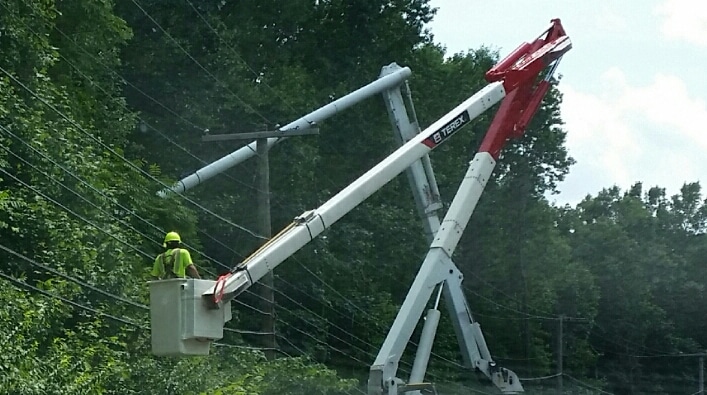An Ontario worker was electrocuted November 2015 in an accident involving overhead power lines.
The two companies involved have been convicted and fined.
PGC Services of Gormley, Ontario, and K-Line Maintenance & Construction Limited of Stouffville, Ontario, have been fined in relation to a worker electrocution at a construction project site. The companies’ convictions came down February 2018.
From the Ontario.ca website:
- PGC failed as an employer to ensure that no object was brought closer than three meters from an energized overhead electrical conductor, as required by section 188(2) of the Construction Regulation, violating section 25(1)(c) of the Occupational Health and Safety Act (OHSA).
- K-Line failed as a constructor to ensure that a designated signaler was in place to warn the operator each time any part of the vehicle or equipment approached three meters from an energized overhead electrical conductor as required by section 188(8) of the Construction Regulation, violating section 23(1)(a) of the OHSA.
The 24-year-old worker was killed when a boom came in contact with live overhead electrical lines. At the time, the work crew was preparing equipment for an excavation. No one was assigned as a signaler to make sure no part of the truck or equipment came within three meters of the power lines. The worker, on the passenger side of the truck that became energized, was handling an attached metal-lined hose.
Company Penalties Imposed
“Following guilty pleas, K-Line was fined $160,000 and PGC was fined $125,000 by [the judge]. The court also imposed a 25-per-cent victim fine surcharge as required by the Provincial Offences Act. The surcharge is credited to a special provincial government fund to assist victims of crime.”
What Rules Apply Here in the U.S.?
OSHA Standards on Working Near Overhead Power Lines
1910.333(c)(3)(i) addresses unqualified persons working near overhead lines. If the worker is working in an elevated position around 50kV or below, he or she cannot work any closer than 10 feet. Around voltages 50kV and higher, the distance increases 4 inches for every 10kV above 50kV.
1910.269(p)(4) addresses operations near energized lines or equipment for qualified electrical workers. In part, OSHA states that…
- Mechanical equipment shall be operated so that the minimum approach distances, established by the employer under paragraph (l)(3)(i) of this section, are maintained from exposed energized lines and equipment…
- A designated employee other than the equipment operator shall observe the approach distance to exposed lines and equipment and provide timely warnings before the minimum approach distance…is reached…
- Each employee shall be protected from hazards that could arise from mechanical equipment contact with energized lines or equipment…
Realize that approaching the MAD boundary (minimum approach distance), OSHA requires the workers to take many extra precautions to prevent electrical accidents such as the one mentioned above. We must be extremely cautious when working anywhere near energized overhead conductors.

